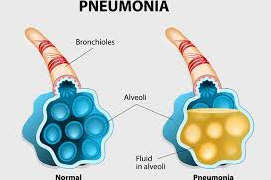The occurrence of Candida albicans is largely due to our j dietary habits. It can easily be called a twentieth-century disease, because our lifestyle and environment allow allergies more and more opportunities to develop. Yeast is naturally present in everyone from the age of about six months. The risk of Candida infections is greatly reduced by a natural, balanced diet.

In a lecture given by Dr Alfred Vogel quite some time ago, he spoke about friendly bacteria in the bowels which are frequently killed off by the food we eat. One wouldn’t think that asking a patient to change his or her diet would be too much of an imposition, but this suggestion isn’t always enthusiastically received. Sometimes I think that people have less trouble changing their religion, their political allegiance, or even their husband or wife, than changing their diet. All I ask is that they cut five foods from their diet, namely sugar, mushrooms, wine, fermented foods or drinks, and chocolate. When I mention sugary foods, I mean all foods that contain sugar. Of the fermented foods, bread is probably the most difficult one to replace. Most alcoholic drinks are fermented and are therefore off limits. Only by following these guidelines, and by introducing a natural diet with lots of vegetables, fruits and nuts, and drinking plenty of water, do we have a chance of combating a Candida problem successfully.
The discovery of antibiotics was quite rightly hailed as a tremendous discovery and many lives have since been saved. Yet, the word antibiotic actually means ‘anti-life’ and unfortunately antibiotics are not selective in the bacteria they destroy. Often the good or friendly bacteria are killed off along with the harmful bacteria. It is these friendly bacteria we rely upon for digestion and for our general good health. Control and balance of a Candida is very important and fortunately there are several good remedies that will assist us in this. Harpagophytum (Devil’s Claw extract in its mother tincture) is one of the best remedies to control a Candida or yeast infection. Molkosan may be used and Caprylic acid, a derivative of coconut oil, has also been used successfully, especially when the Candida is active in the vaginal area.
Deficiency of essential fatty acids may also result in a greater likelihood of developing a Candida infection. These acids contain Omega three and Omega six, essential to health. There are three ‘essential’ fatty acids: linoleic, arachidonic, and linolenic, collectively known as vitamin F. They are termed ‘essential’ because the body cannot produce them. These unsaturated fatty acids are necessary for growth and healthy blood, arteries and nerves. They also help to keep the skin and other tissues youthful and healthy by preventing dryness and scaliness. Essential fatty acids are necessary too for the transport and breakdown of cholesterol. Evening primrose oil, borage oil and blackcurrant seed oil are all good sources of essential fatty acids, and these oils change as we react to the environment with respect to the cell membranes. There are also some oils that are actually detrimental from this point of view, such as peanut oil and coconut oil. The body tissues are made of what we eat, and how we respond to our environment depends totally on how strong the tissues are. Life is a constant renewal of cell tissue and in order to rebuild tissue we need the correct material. Topically applied and absorbed fatty acids can be of great help here, even for babies with skin problems. Even a very young baby can change metabolically when the right oils are used and will improve very quickly.
If the diet is poor, supplementary Omega three and six tend to produce a more anti-inflammatory response. Skin irritation or injury will cause the cells to go into a coagulation response, stimulating the reaction of white blood cells and increasing the production of leucotrines. This can be clearly seen in the skin condition psoriasis. The more leucotrines or inflammatory response, the more division and proliferation of cells is necessary to decrease this reaction. One of the remedies that can be very useful here is Ginkgo biloba.
Ginkgo biloba is the world’s oldest living tree species. Its lineage stretches back 200 million years, and although it originated in China, it grows to a ripe old age in the many other parts of the world to which it has been transplanted. Modern scientific analysis has revealed the reason Ginkgo trees have survived for so long: their leaves are packed with highly-active chemicals that give the tree unusual resistance to parasites, infections and pollution.
The leaves of the Ginkgo are traditionally harvested in the autumn, just as the colour changes, and this is exactly the time when they have their highest active concentrations of bioflavonoids. These are now thought to be most potent of all bioflavonoids, and are thought to have the ability to help maintain the circulation of blood to the brain.
To increase the Omega three factor, flax seed, cod liver and sunflower oil are helpful, as well as selenium and betacarotene. A combination of vitamin E with flax seed oil is totally suitable for the treatment of this affliction. Linoleic acid production is helped by biotin, magnesium, vitamin B6 and zinc. Unfortunately this is obstructed by the use of alcohol, high cholesterol foods, saturated fats, virus infections, and cancer. Evening primrose oil helps to form DGLA (dihomo gammalinolenic acid), which in turn needs vitamin B3, vitamin C and extra zinc to form prostaglandins, necessary in the case of all skin disorders.
Many skin disorders are self-inflicted insofar as they are the result of modern dietary habits. The many patients with yeast infections I have been asked to treat over the years have all been greatly helped when nutritional deficiencies have been dealt with, together with some herbal or homoeopathic treatment. Evening primrose oil, sometimes in combination with fish oil, has been of great help, as well as vitamin A and C supplements.
In countries where the wheat intake is low I have never seen an active candidiasis, which leads me to believe that our lifestyle, wheat consumption and the number of processed food items in our diet, all have a great deal to answer for. Organically-grown wheat is much less harmful, but, if a definite wheat allergy has been proven, it must be banned from the diet. If the Candida albicans condition is indeed affecting the vaginal and anal areas, dabbing with some diluted Molkosan will ease the discomfort, and sometimes it is useful to know that the skin will soften with witch hazel (Hamamelis virginiana). The Bioforce range also has a witch hazel cream, called Hamamelis salve, which also contains St John’s Wort, echinacea and wheat germ oil.
Patients are not always prepared to accept changes in their diet, and I often have to explain that, even if they are not willing to accept a major change of direction, the very least they ought to do is leave out sugar and hopefully yeast. Just eliminating these substances often brings about a considerable change. I often wonder why people suffer such unpleasant problems, when they can be helped so easily. Never underestimate a yeast infection, because it is likely to lead to greater problems if it goes unchecked. In research, active Candida conditions have been found in cancer patients and, together with this word of warning, I also want to encourage the sufferer that yeast infections and Candida albicans can be treated successfully. However, never delay seeking help when the condition comes to light.




























